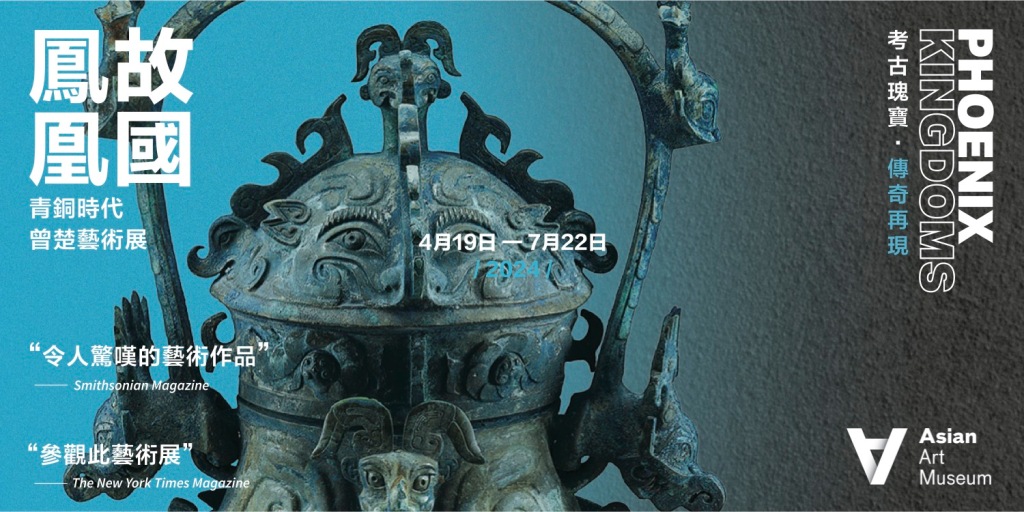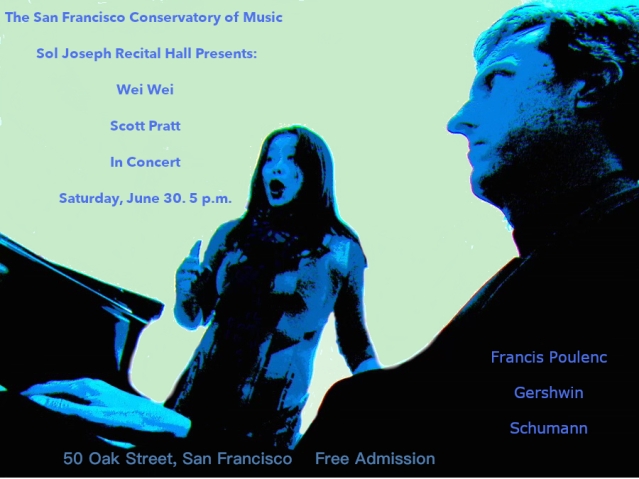By Noma Faingold
“Art should show you something you’ve never seen before.” – Kehinde Wiley
The gallery walls are painted a saturated, deep brick color. They envelop. Each room is as dark as a theater, right as the play is about to start. Spotlights hit the billboard-size paintings and larger-than-life sculptures for maximum drama. You cannot look away.

Kehinde Wiley’s most ambitious exhibit, “An Archaeology of Silence,” which opened at the de Young Museum on March 18 and runs through Oct. 15, will inspire, unsettle, disarm and maybe change the outlook of those who experience it.
“I wanted to create a kind of religious feeling in the museum space,” Wiley said. “I’m insisting upon the sacred and the profane in that way.”
Wiley plays with the scale (his largest and smallest works share the spaces) and fearless composition to provide an atmosphere both intimate and epic; heroic and fragile.
“I am attempting to create a sense of awe, a sense of power and vulnerability,” he said.
Los Angeles-born Wiley, 46, who earned a Bachelor of Fine Arts degree at the San Francisco Art Institute (SFAI) and an MFA at Yale University, mastered the Old Masters before turning traditional portraiture into heightened realism full of dichotomies. He became most known for taking classic western art motifs and painting his subjects (mostly unknown Black men), whom he selected through street casting and painting them in noble, austere poses, previously reserved for aristocrats and royalty. Wiley always made sure the details of hair and attire were of the moment, often referencing pop culture, from casual streetwear to luxury brand logos.
“So much of my work has been about these large-scale portraits of people standing proud, being celebrated in their own illustrious light and lending that power to people who happen to look like me,” Wiley said. Wiley is perhaps best known for being selected by Barack Obama to paint his official presidential portrait for the Smithsonian National Portrait Gallery. The unconventional, celebrated portrait toured several U.S. museums last year, including the de Young.
In “An Archeology of Silence,” which premiered last summer during the Venice Biennale and makes its U.S. debut at the de Young, Wiley takes a sobering turn in depicting the fallen in sculptures and paintings – heroes, martyrs, saints and victims – Black men and women mostly in supine positions.

“It’s asking a lot of the viewer to be able to see all that,” Wiley said.
The exhibition’s title comes from a book by the French philosopher Michel Foucault, referring to societal suppression.
The vulnerable portrayals of Black people struck down, wounded, resting or dead are haunting. “An Archeology of Silence” is a piercing statement about systemic violence against Black people. Yet Wiley also insists on delivering an uplifting message. “Sure, it’s a downer,” he said, “but this work is about the desire to be seen, to be defiantly alive. I’m not just creating a political statement, I’m creating a much more personal, poetic and spiritual one.”
To balance the bleakness, Wiley features decorative imagery, such as flowers and overgrown vines. “The landscapes are sparkling with life,” he said. “The decorative filagree is demanding space.
“Even in death and decay,” Wiley said, “there’s an insistence upon beauty and grace, even in the worst of what humanity has to throw at you. There’s a stubborn holding onto life and celebration in the midst of all this suffering. I’m tired of seeing the work of African Americans only relating to suffering.”
While a few or these works first emerged in 2008 in Wiley’s exhibit, “Down,” in New York, the 25-piece “An Archeology of Silence” expanded greatly during the height of the pandemic. Wiley spent much of that time in Dakar, Senegal, where he set up a multidisciplinary artist-in-residence program called Black Rock. Senegalese people became his models for new paintings and sculptures, making the concept more global. At the same time, Wiley felt more of an urgency to share his art after the George Floyd murder in 2020 and once the Black Lives Matter movement took hold.
The centerpiece of the exhibit (created in 2022 and given the title, “An Archeology of Silence”), is a 17.5-foot-tall bronze sculpture of a shirtless dead Black man, draped over a majestic horse. It’s Wiley’s response to seeing monuments in Virginia of triumphant Confederate officers on horseback.
“I have been blessed enough to bear witness to some of the horrors that we all have,” he said. “And I’ve been blessed enough to have the tools to do something about it.”
Wiley was raised by a single mother of six children in South Central Los Angeles. His father, who had been a scholarship student in the U.S., had to return to Nigeria when his visa ran out. Wiley wasn’t able to connect with him again until he was 20 years old, thanks to a Fulbright grant. Jeremy Stone, who was an advisor of Wiley’s at the SFAI and assisted with his grant application, remembers him as a quiet, focused and thoughtful student. She has kept in touch with him.
“He was working on technique and craft, but he knew what he wanted to do,” said the art appraiser, who has her own San Francisco-based company, Business Matters in the Visual Art.
For Wiley, the exhibit being in San Francisco feels like a homecoming.
“The Bay Area is a coming of age for me. I would argue that the Bay Area is a coming of age for America,” he said. “This part of the world was at the core of the cultural revolution that America was so heavily marked by at the end of the ’50s and the core of the ’60s. It became the site of resistance for people of color, for the marginalized, for the queer, for the inconvenient. San Francisco is that place where people question authority and assumptions.”
Abram Jackson, director of interpretation for the Fine Arts Museums of San Francisco, tackled maximizing community involvement by seeking out several activist organizations as partners to help shape the overall experience of the exhibit.
“We had to localize it,” said Jackson. “We had to be really intentional and caring for our visitors.”
Contributions by the group of advisors include edits of the wall text and altering the language of some materials. For example, the phrase of “Black bodies” shifted to “Black people” and “state-sanctioned violence” was changed to “systemic violence.”

Rev. Wanda Johnson, founder of the Oscar Grant Foundation (and mother of Oscar Grant, who was murdered on the train platform at Fruitvale Station by a BART police officer in 2009), provided commentary on a couple of paintings for the audio guide.
Jackson worked with the FAMSF’s Director of Public Programs and Community Engagement, Devin Malone, to create the Respite Room, adjacent to the exhibit to give visitors space to pause and process. There’s also a resource room where educational, grief and mental health materials will be available.
Wiley is considered a rock star in the art world. Some have called him a genius. He’s building an empire – not just for himself. In addition to Black Rock, he has studios in Beijing and Brooklyn and is providing opportunities for young artists to develop. Who knows what’s next for him? He’s just as likely to look inward for inspiration as he is to find a new muse anywhere in the world. “If you really think about my entire body of work, it’s a self-portrait,” said Wiley. “Who’s looking?”
Kehinde Wiley: An Archaeology of Silence runs from March 18 to Oct. 15, at the de Young Museum. Free weekends (one per month) is sponsored by $1 million grant from Google.org. There will also be grief workshops. For more information: www.famsf.org.
Categories: Art












